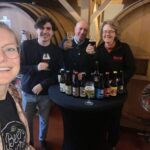Another historical abbey beer Tongerlo and its sibling Keizer Karel


In Spring 2020, because of Corona, we organise FREE online beer tastings for you, watch…
Here, a summary of our 4th episode. To read about previous online tastings, click here.
Watch the tasting replay on our Facebook page here.
Belgium is famous for its Trappist beers, Lambics and Triple. But are you aware that abbey beers have a nice story too? Good news: Belgium has a large selection of such beers, so reason enough to highlight again one of these historical Belgian beers.
In the third episode of our online beer tastings, we featured one abbey beer, Tongerlo, and its sibling the reddish ale Keizer Karel, both belonging to the brewery Haacht established in 1893.
A good start of savouring the beer, is to know its alcohol percentage. The beer has 9% which is quite high, but Belgium is just famous for its strong beers, I’m sorry for that 😉 Maybe starting with Keizer Karel would make more sense because of their alcohol percentage, but as its a sweet beer and Tongerlo a slightly more bitter, we keep the sweetness rather for the end!
Tasting 1 : Tongerlo Prior


A beer with a double personality: with or without yeast
For those who have been following my previous tastings, you are aware of the “eyes-nose-mouth” rule, right? If not, have a look first to our previous beer tastings.
Many beers go through two rounds of fermentation: during the making process, and inside the bottlewhen yeast is added during bottling. The beer is then generally kept in a room of 22° for 1 to 2 weeks so it develops full character. However Tongerlo chooses to ripen the beer for 3 weeks, giving the yeast time to create a more complex aroma and taste. Beers should always be stored upright, allowing to observe a layer of yeast in the bottom of the bottle. So before we start this tasting, we realize that a tasting with yeast will be a completely different experience than a tasting without yeast. We traditionally serve this beer in in a 33cl glass andpour the last 5cl of yeast is into a shot glass. Then the customer decides whether they will drink the “yeast glass” or add it to their beer.
In my tasting, I wanted to give my fans an even more special experience by tasting the beer with the yeast and without the yeast.
We do that by pouring the beer in two different glasses. The beer will not only taste different but also have different amoras and colour.
- 1st glass: we pour half of the beer
- 2nd glass: we pour the second part of the beer. At the end we roll the bottle so that the yeast dissolves well and can be added to the glass.
The first glass is much lighter, more transparent and yellowish than the second. In the second glass, we notice much cloudier, not transparent beer, which is close to an amber beer.
Time to smell the aromas
The smell of our first glass is much simpler than the second, where citrus and lemon are dominant. Certain viewers definitely agreed with me. In the second glass, we notice much heavier scents, especially tropical fruits like banana, pineapple, passion fruit. I have to admit that I am quite a fan of this more complex version.
And finally, we can taste it.
The taste of the first glass is less special than the taste of the second glass. Bitter aftertaste can be observed for both versions, but the taste of the second glass has a more complex fruity touch. So we conclude that the beer with yeast is more popular.
Prior: the man who controlled the abbey in the Middle Ages
Because Prior means first in Latin, the name was also used for the man who was in control of the abbey. As we mentioned in our previous tastings, every abbey needed to follow a Catholic order. Affligem followed the Benedictus, Orval chose the Cistercians order. Averbode followed another order called Norbertines just like Tongerlo, founded in 1130.
Producing their own beers was a way for these communities to survive. Their trade went well but during World War I & II, a lot of kettle and fields were destroyed and the abbeys closed their doors. As they were rich anyway, money was not an issue so the community became inactive. Unfortunately, from the80s and 90s, churches became poor and started searching for new ways to make money.
As brewery Haacht is known for their beers full of history, the monks knocked at their door and a new partnership was born: Haacht uses the name Tongerlo in exchange for receiving a fee per hectoliter of beer sold.


Tasting 2 : Keizer Karel Ruby Red
We didn’t taste a red beer in our previous virtual tastings andI do my best to present all kinds of beers. That’s why I chose the Keizer Karel Ruby Red.
The best way of pouring a beer is to lean the glass at a 45° angle, then back to its upright position. This creates a nice head of foam to your beer.
The beer displays a beautiful shiny red with a brownish touch. When we smell the beer, we notice a quite fruity aroma.
Tasting can start. But no tasting without a Cheers!
A slightly bitter flavour is presented followed by a bitter aftertaste. Cherry flavours dominated the taste. We can call this a sweet-bitter beer.
For the chocolate combination, we partnered with Brussels chocolaterie Laurent Gerbaud I chose a milk chocolate from with cherry notes so we create an easy harmony.
Keizer Karel: a powerful man since his young years
Keizer Karel, Charles Quint, Charles the 5th, Carlos Quintos: his name was translated in a lot of languages. Born in Ghent in 1500, he started to control big parts of Europe from Dutch regios to Austria. At 19 years old,he became king of Spain and a few years later he also became Roman-German Emperor.
The Haacht brewery named their beer in honour of this key historical figure in Belgium’s history when they launched Keizer Karel Ruby Red about 30 years ago. Since then, another variety of Keizer Karel was created to celebrate the 500 years anniversary of the brewery, which of course took place in Ghent: Keizer Karel Goud Blond.
When visiting Ghent with us, you’ll find mutiple places called to this big key player. We like to explain you more about him if you want to.
Let’s have a deeper look into the portfolio of brewery Haacht
Have you heard of the brewery? Haacht refers to a town, located between Leuven and Werchter. The small little town Werchter is famous for its music festival Rock Werchter,the best festival in Belgium for pop & rock lovers. The Tongerlo beer however takes it names from a town close to the Dutch border, home of the lovely abbey where 38 monks are living their lives in Christianity.
The Tongerlo range has more than only their Prior beer, which is a Triple. The portfolio is enlarged with a blond called Lux, a brown called Nox and a Christmas Tongerlo.
Nox Tongerlo is particularly interesting as it is a very tasteful brown beer of 6,5%despite its low alcohol percentage. Brown beers are usually rather high in alcohol percentage, with a few exceptions: Libidus beer 6,4%, Crystalstick 7%, Gauloise Double 6%, Buffalo 1907 6,5% , Corsendonk Pater 6,5%… But don’t worry, you will have more opportunities to learn more about these beers!
Spotlight on tafelbier (table beer)
There is no big histori
One of our participants mentioned Tafelbier, a beer of only 2 to 3% alcohol. Table beer is central to Begian history. More than 500 years ago, everyone drank beer (including children) because the water contained bacteria that could only be destroyed by cooking it at high temperature.
People used to add various herbs and malts to the water, creating the dark, opaque “old brown” beer, containing very little alcohol. To maintain this tradition, we can still find table beer in Belgium, an heritage of the old brown beer from the past. Piedboeuf is an example of such a table beer.
Table beer is even served in the Heeren van Liedekerke restaurant, which received the title of the best beer restaurant in the world for five years in a row.
I was really delighted with this beer tasting. Looks like there were about 20% more people than my previous tasting, so that’s good news! Looking forward to sharing you more stories!
Want to hear more of these beer secrets?
Then do not hesitate to book one of our beer tours. Sharing our beer knowledge is what we are passionate about.
Read another episode about our online beer tastings.
Would you like to hear more beer news before you can actually meet us? Follow us on Facebook & stay tuned !!




